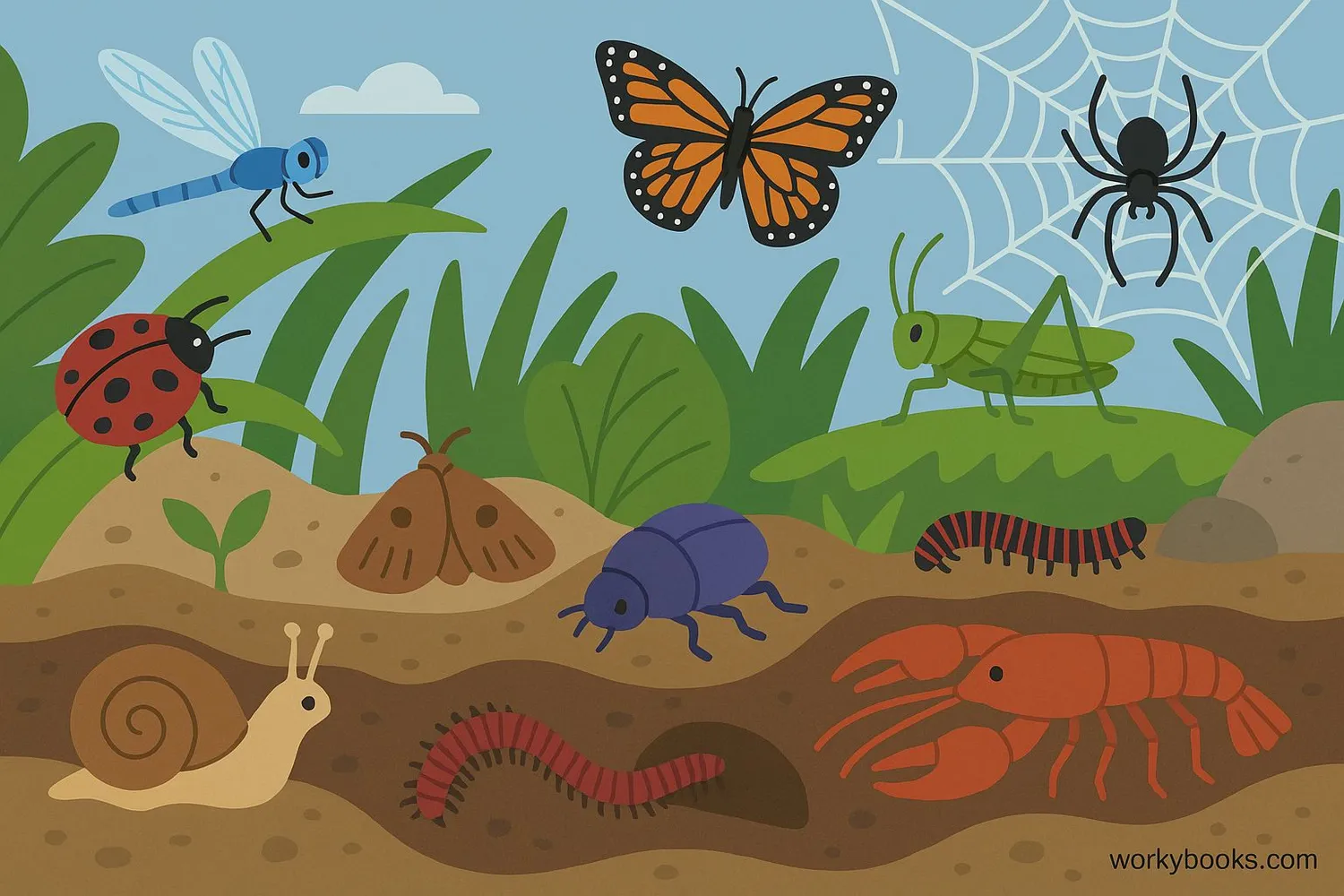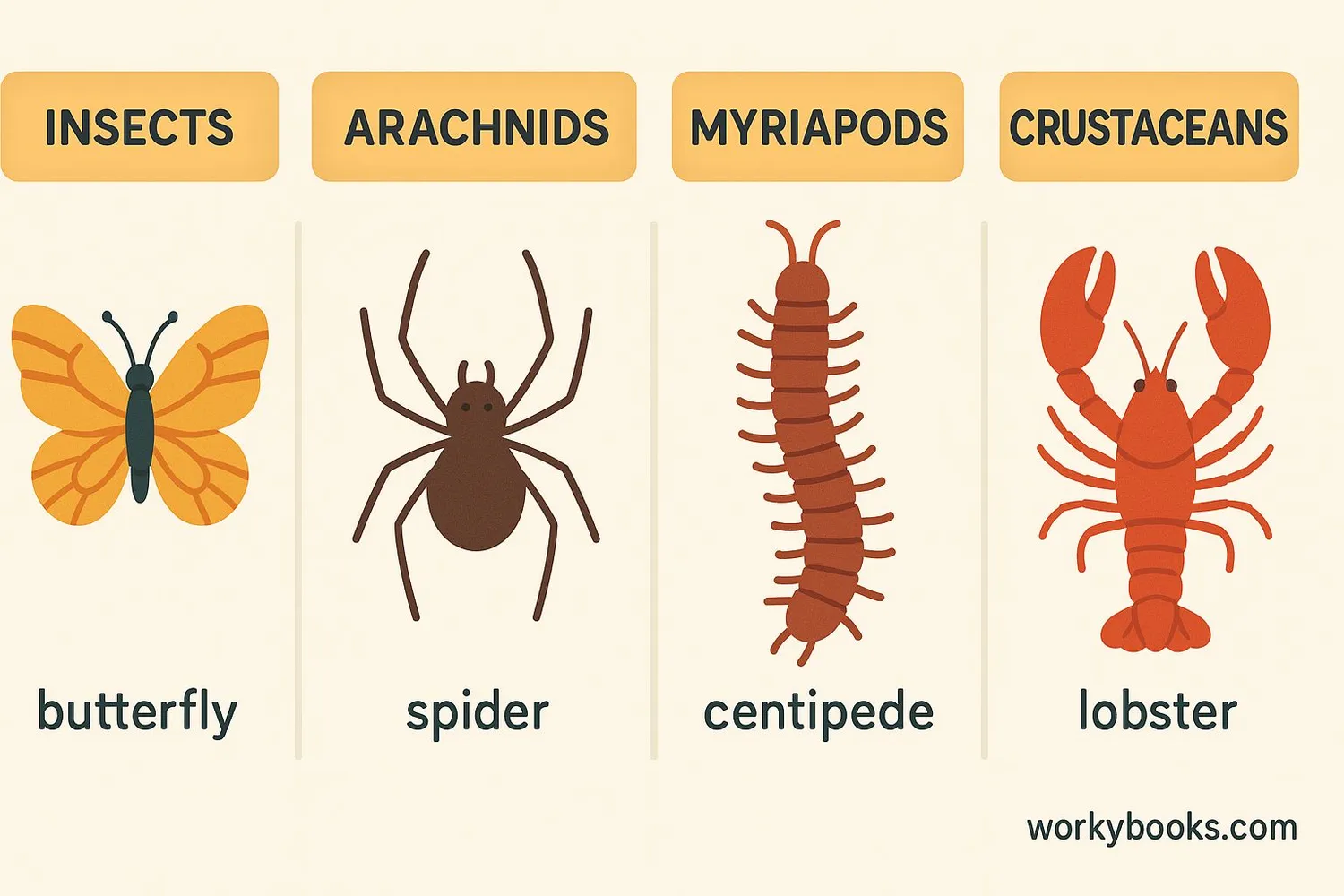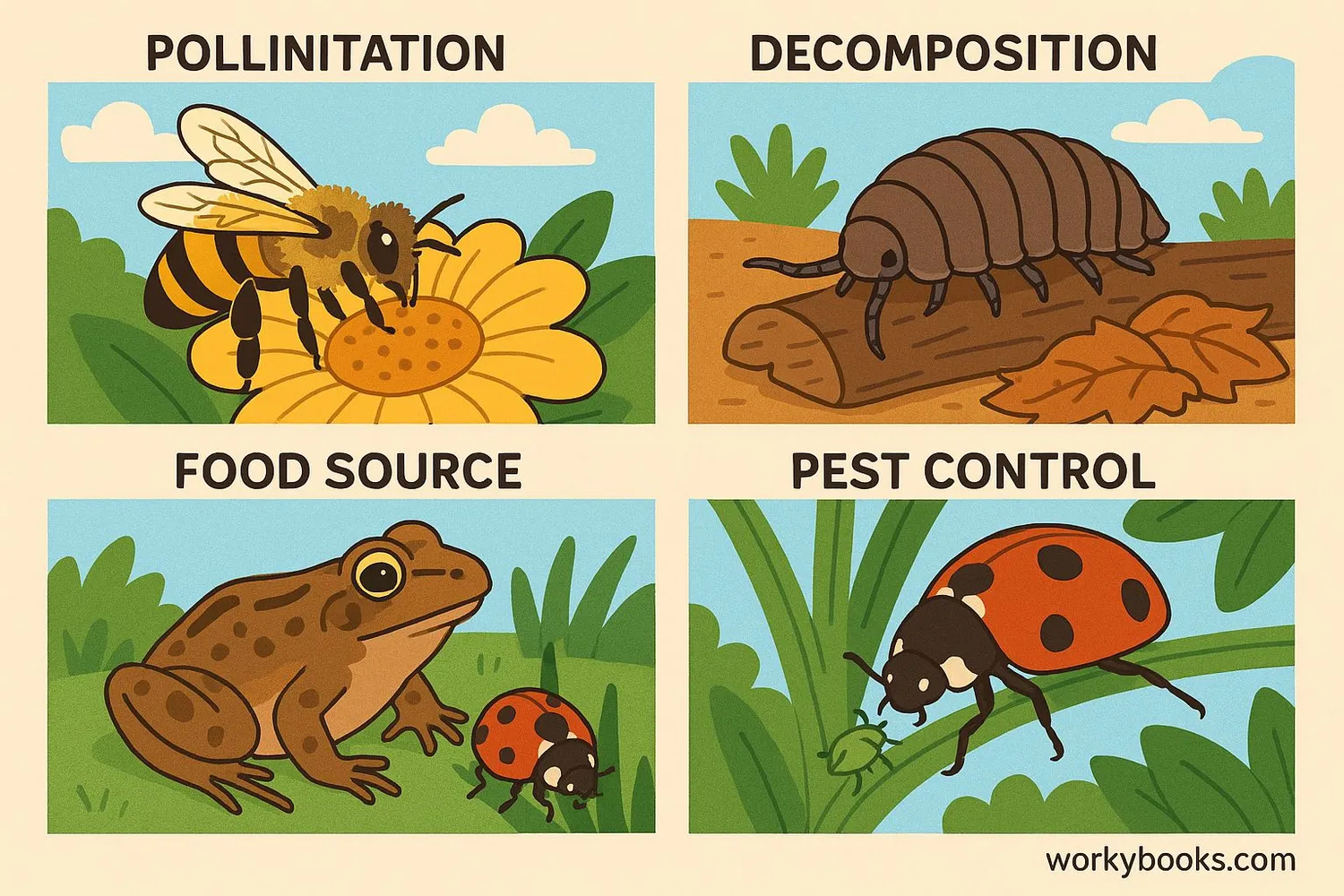Arthropods - Definition, Examples, Quiz, FAQ, Trivia
Discover the amazing world of insects, spiders, crustaceans, and other arthropods
What Are Arthropods?

Arthropods are invertebrate animals with jointed legs and exoskeletons. They make up the largest phylum in the animal kingdom, with over 80% of all known living animal species being arthropods!
The name "arthropod" comes from Greek words meaning "jointed foot." These amazing creatures include familiar animals like insects, spiders, crabs, lobsters, centipedes, and millipedes. They live in almost every habitat on Earth—from deep oceans to high mountains, from tropical forests to your own backyard.
Diversity Fact!
Scientists estimate there may be between 5-10 million arthropod species, but only about 1 million have been identified so far!
Key Characteristics of Arthropods

All arthropods share these key characteristics:
Exoskeleton
A hard external skeleton made of chitin that provides support and protection
Segmented Bodies
Bodies divided into sections (head, thorax, abdomen) often fused together
Jointed Appendages
Legs, antennae, and mouthparts that bend at joints
Bilateral Symmetry
Left and right sides are mirror images
Molting
They shed their exoskeleton to grow in a process called ecdysis
Arthropods have open circulatory systems and many have compound eyes made of multiple lenses. Their nervous system includes a brain and a ventral nerve cord with ganglia in each body segment.
Exoskeleton Fact!
Arthropods must molt (shed their exoskeleton) to grow. During molting, they're vulnerable until their new exoskeleton hardens.
Classification of Arthropods

Arthropods are classified into four main groups based on their body structure, number of legs, and other features:
Insects
3 body segments, 6 legs, antennae; includes beetles, butterflies, ants
Arachnids
2 body segments, 8 legs, no antennae; includes spiders, scorpions, ticks
Crustaceans
2-3 body segments, 10+ legs, 2 antennae; includes crabs, lobsters, shrimp
Myriapods
Many segments, many legs; includes centipedes and millipedes
Insects are the most diverse group with over 1 million described species. Arachnids have about 100,000 species, crustaceans about 67,000, and myriapods about 16,000 species.
Importance of Arthropods

Arthropods play crucial roles in ecosystems and human societies:
Pollination
Bees, butterflies, and other insects pollinate most flowering plants
Decomposition
Many arthropods break down dead material and recycle nutrients
Food Source
They're food for many animals, and some are eaten by humans too
Some arthropods are pests that damage crops or spread diseases, but many more are beneficial. Scientists study arthropods to understand evolution, ecology, and even to develop new technologies through biomimicry.
Without arthropods, ecosystems would collapse as pollination would decrease, nutrient cycling would slow, and food webs would disintegrate.
Arthropod Quiz
Test your arthropod knowledge with this quiz! Answer all 5 questions to see how much you've learned.
Frequently Asked Questions
Here are answers to some common questions about arthropods:
Amazing Arthropod Trivia
Discover some fascinating facts about arthropods!
Incredible Diversity
There are more species of beetles alone than all species of plants combined! Coleoptera (beetles) is the largest order of insects with about 400,000 species.
Size Extremes
The smallest arthropod is a parasitic wasp measuring just 0.139 mm, while the largest is the Japanese spider crab with a leg span of up to 3.8 meters (12.5 feet)!
Ancient Lineage
Arthropods have existed for over 500 million years! The first arthropods appeared in the Cambrian period, long before dinosaurs walked the Earth.
Amazing Strength
Some beetles can lift over 800 times their own body weight! If humans had that strength, we could lift about 60,000 kg (132,000 pounds).


